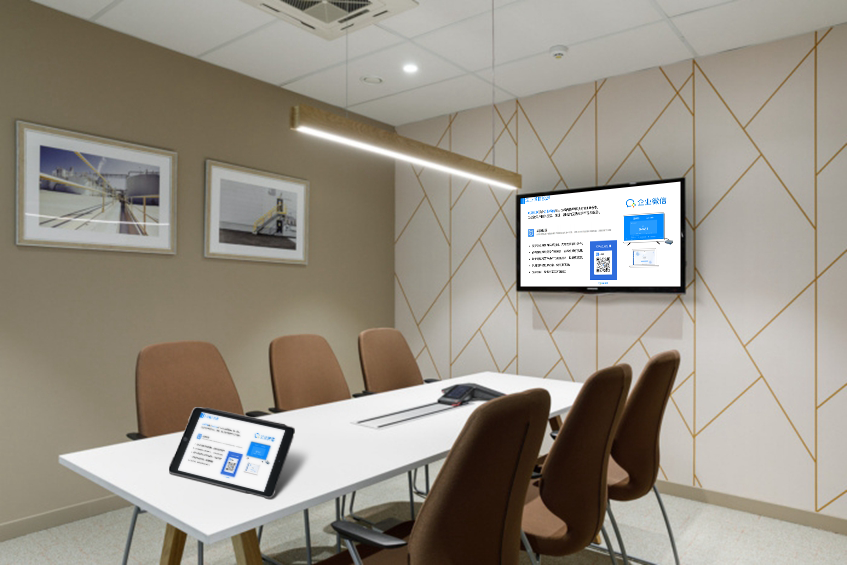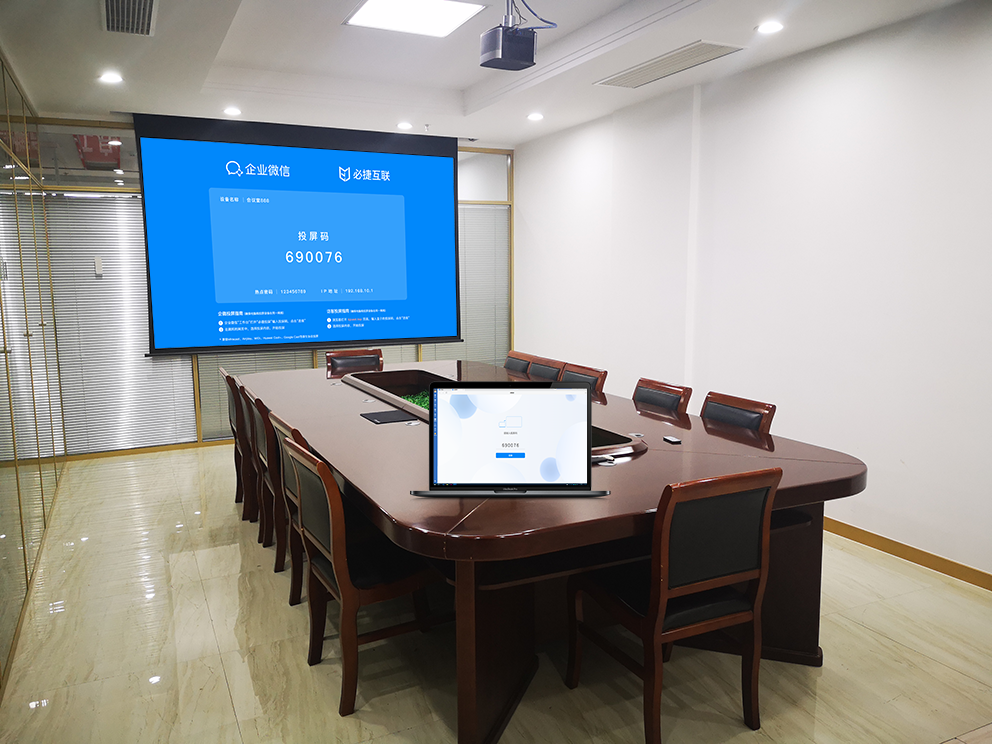Wireless Screen Mirroring: A Multi-Scenario Content Interconnection Solution
The wireless screen mirroring solution uses advanced technology to break down device and space limitations, allowing content from terminals like phones, computers, and tablets to be quickly projected onto a large screen. It is widely used in office, education, home, and other scenarios, reshaping the modes of information delivery and interaction.
Core Technology Highlights
- Universal Protocol Compatibility: It supports mainstream protocols such as AirPlay, Miracast, DLNA, and WiDi, covering all operating systems and devices, including iOS, Android, Windows, macOS, and HarmonyOS. Whether it’s a new smartphone or an old computer, you can connect with a single click using the corresponding method, with no extra software installation required and a device adaptation rate of 99%.
- Stable HD Transmission: Using a dual-band Wi-Fi module and dynamic anti-interference technology, it achieves 4K Ultra HD quality transmission. The frame rate is stable at 60fps, and latency is controlled within 50ms. Even in complex environments with multiple devices mirroring simultaneously, it ensures synchronized and smooth audio and video without lag, meeting the high-quality needs of presentations, movies, and more.
- Diverse Connection Methods: It provides multiple ways to connect. In addition to direct protocol connection, it also supports QR code mirroring, mirroring code connections, and NFC “tap-to-connect.” For scenarios without a network, it supports direct connection via a mobile hotspot, ensuring smooth mirroring in outdoor or temporary locations. The connection process can be completed in as little as 3 seconds.
Multi-Scenario Application Solutions
- Office Meetings: In a conference room with a mirroring terminal, attendees can quickly project proposals, data reports, and other content from their laptops and phones to the large screen. It supports multi-device split-screen displays for easy comparison and analysis of different content. With annotation features, you can mark key points on the mirrored content in real time, and the annotations are automatically saved after the meeting, which improves meeting efficiency.
- Classroom Teaching: A wall-mounted mirroring device is installed in the classroom. Teachers can mirror courseware and educational videos for their lectures, and students can mirror their assignments and experimental results to participate in the interaction. Paired with an electronic whiteboard, you can directly write derivations on the mirrored content, making teaching more vivid and intuitive and enhancing student participation.
- Home Entertainment: A TV or projector with a mirroring module allows you to mirror movies, games, photos, and more from your phone to the large screen for an immersive experience. It supports “off-screen mirroring,” so you can turn off your phone’s screen after connecting to save power without affecting the playback. It also supports switching between mirrored devices, meeting the sharing needs of multiple people at home.
- Commercial Displays: Advertising screens in places like shopping malls and exhibitions are equipped with mirroring functions. Staff can use their phones to quickly mirror product introductions and promotional videos to fully showcase product features to customers. It supports timed-loop mirroring, which automatically plays pre-set content to attract customer attention and reduce manual operations.

Management and Security Assurance
- Smart Management Platform: Administrators can monitor the real-time status of all mirroring devices via a backend, including their online status, connection frequency, and fault alarms. It supports remote power on/off and firmware upgrades, which lowers maintenance costs. It can also pre-set different scenario modes, such as “Meeting Mode” and “Teaching Mode,” to switch device parameters with a single click.
- Secure Permission Control: It supports setting up a device whitelist, allowing only authorized devices to mirror and preventing irrelevant content from causing disruptions. For office and educational scenarios, it can enable a content moderation function, where mirrored content must be confirmed by an administrator before it can be displayed, ensuring information security.
- Encrypted Data Protection: All data transmission during the mirroring process uses encryption technology to prevent content from being stolen or tampered with, ensuring the security of sensitive information like trade secrets and educational data.
With its powerful compatibility, stability, and convenience, the wireless screen mirroring solution has become an important tool for the efficient delivery of content and interaction in various scenarios, helping to improve the efficiency and experience of work, study, and life.